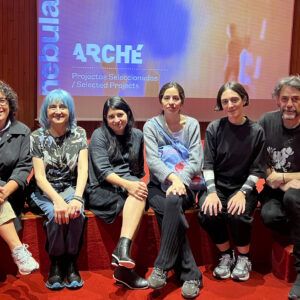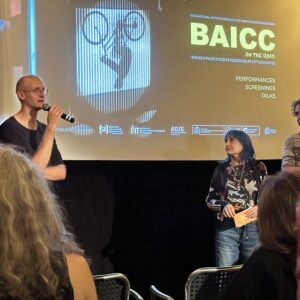“Have you noticed that all the discourses that can be held on a film, or on the cinema (and large quantities of them have been held), start off from the a priori non-signifying existence of an apparatus producing images, which can then be used indifferently for this or that purpose, on the right or on the left?” We have chosen this quote by Comolli (from his Technique and Ideology, where he discusses the camera as an invention that has never been neutral, but imbued with bourgeois ideology, and with an idea of perspective that traces back to the Quattrocento) to introduce the program we’re devoting to the film camera… or, better said, to the idea of the film camera. Most of the films that are produced and watched rely, indeed, on the premise of an omniscient gaze that can only materialize when the very device that generates the images is hidden or erased. Cinema as a vehicle for stories does not reveal its entrails. But something happens in experimental film that separates it from this other kind of cinema: most of the time, the experimental filmmaker is also the camera operator of their own film. This modus operandi, one that doesn’t involve any hierarchy or an actual film crew, encourages a very different relationship with the technical media that allow the existence of cinema –a relationship that is much more intimate and direct. The camera becomes a tool for the artist, who has a deep knowledge of its ways and is emotionally attached to it. As a tool, the camera offers a number of possibilities and has specific limitations. Its usage has encouraged many artists to make films that reflect on the very nature of the device, and this program is a good example of it.
There is the “filmed filmmaker”: a self-portrait of the filmmaker and their device; a trope that takes several forms in the works of creators like Dietmar Brehm (Austria), Christian Lebrat (France), and Jun’ichi Okuyama (Japan). The idea of attaching prosthetic elements to the camera, through actions that refer (directly or indirectly) to its very mechanisms, is also present: Lebrat’s zoetrope-shutter, Yonay Boix’s filters and glass sheets, Chris Welsby’s external, reflective shutter; and Pablo Marín’s “modified windows”. The program is complemented with a cabinet of curiosities: a selection of works created with modified or handmade cameras. This cabinet features three different versions of the pinhole camera: Paolo Gioli’s vertical design in 16mm (a casual “camera” made with a super 8 cartridge) and Phillip Fleischman’s pieces devoted to architectural spaces, which he filmed with two cartridge-cameras designed ad hoc for this project. The program closes with a film that we hope will become a connecting thread with future editions: Projector Obscura, a piece by Peter Miller made with film projectors from different movie theaters, using them as cameras.






